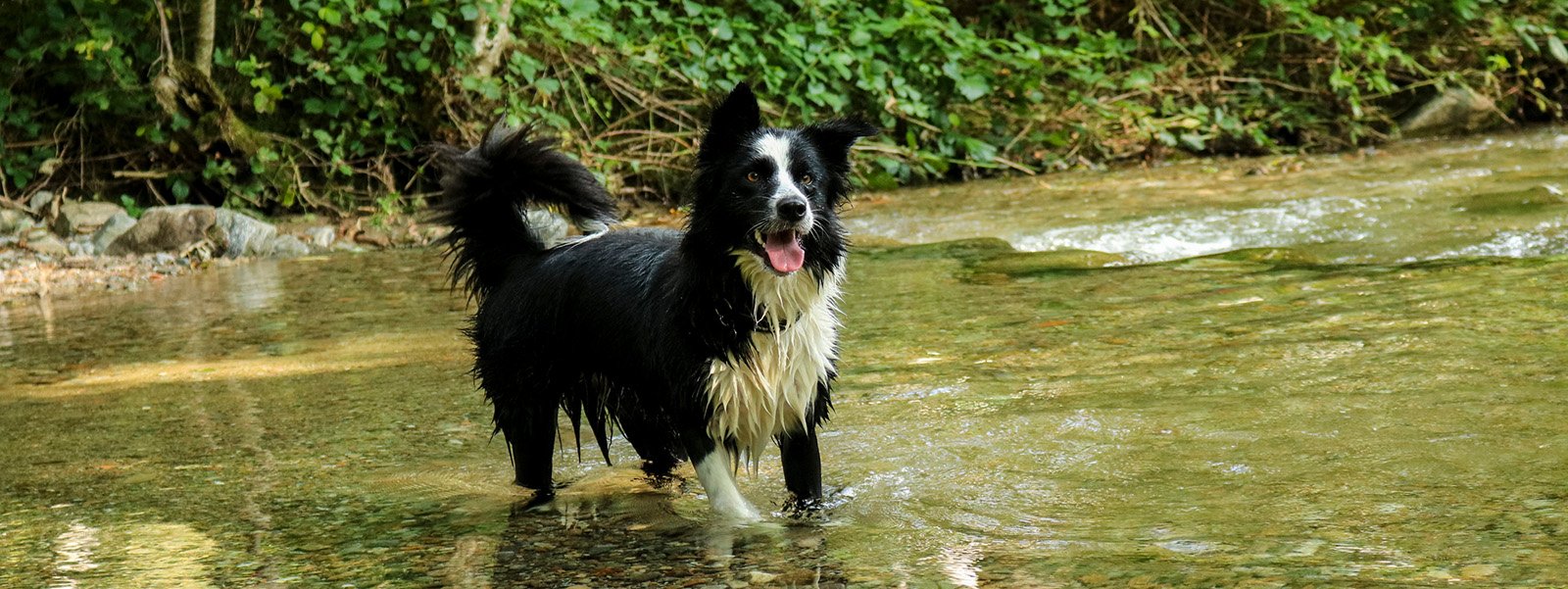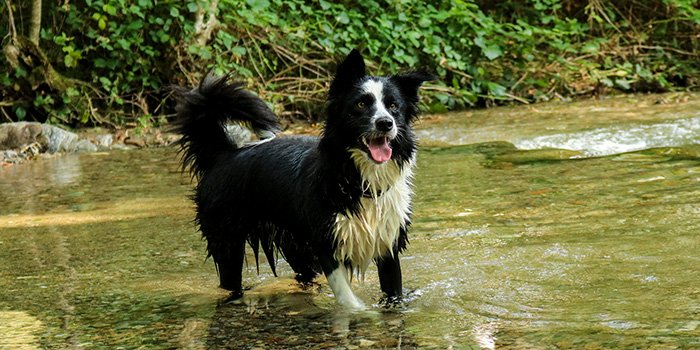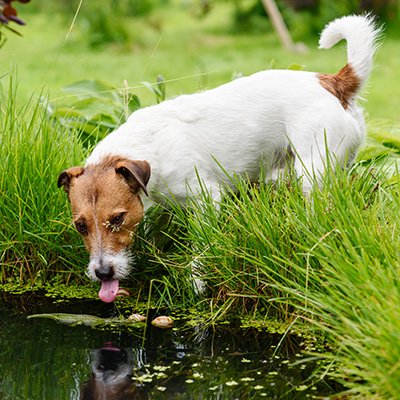Preventing poisoning
Of course, it is best if neither you nor your furry friend come into direct contact with the toxic bacteria. Some official bodies provide information on current bathing water quality. In Austria, the Agency for Health and Food Safety (AGES) carries out constant measurements, while Germany has authorities specific to each federal state to do so. The reports are usually available online. In addition, you can ask in your local municipality if there is any information on the current situation. Should there ever be an official bathing ban, be sure to comply with it!
Since samples are not taken from every single body of water, avoid places that tend to promote the growth of blue-green algae if possible. Take a water bottle with you on every walk so that your dog does not necessarily have to drink water from warm puddles. After swimming in lakes or playing in streams, thoroughly showering with lukewarm, clear water at home is generally a good idea to rinse any potential bacteria residues from their fur.
Possible symptoms of blue-green algae poisoning
- increased salivation
- frantic panting
- shortness of breath
- vomiting
- diarrhoea
- disorientation
- weakness, unconsciousness
- skin rash, itching
- pale or bluish mucous membranes in the mouth
- muscle tremor, muscle cramps
- paralysis
Symptoms usually appear within a short time after contact with the bacteria. If you suspect blue-green algae poisoning in your dog, please seek veterinary help as soon as possible.
If your pet has only caught a small dose of blue-green algae, individual symptoms such as vomiting or diarrhoea may not be immediately associated with the last swimming trip. Inform your vet about recent activities so that the possibility of blue-green algae poisoning can be checked.
Additional tips from the clinic
Some veterinary clinics recommend having activated charcoal handy as a first aid measure. Discuss this at your clinic and ask about the recommended dose for your furry friend.
It is always best to bring the dog to the water on a leash and first make sure that it really is safe to go in. If not, you can always offer a treat as a consolation and the promise to come back when you can splash around without worrying.










The information below is required for social login
Sign In
Create New Account